Classic Commentaries and Studies on the Minor Prophets (40 vols.)
Digital Logos Edition
Overview
The Classic Commentaries and Studies on the Minor Prophets collection includes some of the most significant late-nineteenth- and early-twentieth-century studies on the books of the twelve Minor Prophets. With notable authors such as S. R. Driver, Ralph Wardlaw, and Edward Marbury, Classic Commentaries and Studies on the Minor Prophets offers more than 9,000 pages of exegetical analysis, rhetorical insight, and contextual comparison. These 41 volumes have had an enduring impact on Old Testament exegesis, and this exceptional collection marries easy accessibility and scholastic richness.
These volumes are essential for anyone studying the books of the Minor Prophets—students, scholars, pastors, and historians alike. With Logos Bible Software, this collection is completely searchable—Scripture passages appear on mouse-over, and link to both translations and original-language resources. This makes these texts more powerful and easier to access than ever before. With Logos’ advanced search features, you can perform comprehensive searches by topic or Scripture reference—finding, for example, every mention of “Ninevah” or “judgment.”

- More than 9,000 pages of exegetical research and commentary
- In-depth studies on the lives of the Minor Prophets
- Fully integrated with your Logos digital library
- Title: Classic Commentaries and Studies on the Minor Prophets
- Volumes: 40
- Pages: 9,509
This title is included in the following collections
You can save when you purchase this product as part of a collection.
Logos 8 Collector's Edition Le...
$11,399.99$11,399.99Logos 9 Collector's Edition Le...
$11,399.99$11,399.99Logos 8 Ultimate Legacy Librar...
$21,749.99$21,749.99Logos 9 Ultimate Legacy Librar...
$24,999.99$24,999.99
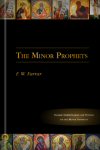
In order to understand prophecy, it’s essential to have a thorough understanding of what it means to be a “prophet” and the function of prophecy among ancient Hebrews. F. W. Farrar takes careful note of this need in his work on the Minor Prophets, outlining and defining prophecy. He discusses the style and chronology of prophetic writings, and provides, for each prophet, a historical and biographical overview and commentary.
F. W. Farrar (1831–1903) was educated at King’s College in London and Trinity College in Cambridge. The archdeacon of Westminster and the dean of Canterbury, Farrar was a prolific author and powerful preacher. His History of Interpretation is also available from Logos.
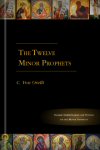
In this volume, C. Von Orelli gives a brief overview of the overall history of the works of the Minor Prophets before delving into an in-depth study of each book. His commentary examines each passage’s language and structure, focusing heavily on connotation and cultural influence.
C. Von Orelli (1846–1912) was educated at Lausanne, Zurich, and Erlangen before becoming Professor Extraordinarius of Theology at the University of Basel in Switzerland.
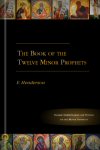
In The Book of the Twelve Minor Prophets, E. Henderson explores the chronology and history of the Minor Prophets. He provides a biographical overview of each prophet and an extensive commentary that uses a combination of syntaxical analysis, denotative and connotative interpretation, and historical context to mine their depths.
E. Henderson (1784–1858) was educated to the University of Copenhagen. Henderson was notable for organizing the Bible Society in Denmark.

In this volume, Robert F. Horton begins a study on the first six Minor Prophets—Hosea, Joel, Amos, Obadiah, Jonah—giving an exposition of the political and historical context, intended exhortations, and ramifications of the prophetic text. Establishing a chronological table, the commentaries on each book feature an index, notes and annotations, maps, and historical overviews that detail the lives and times of the prophetic authors.
Robert F. Horton (1855–1934) was educated at Shrewsbury School and New College, Oxford. He went on to become pastor of the Congregational Church in Hampshire.
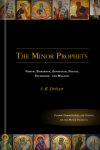
In this volume, S. R. Driver completes the study of the Minor Prophets by examining the books of Nahum, Habakkuk, Zephaniah, Haggai, Zechariah, and Malachi, giving an exposition of the political and historical context,intended exhortations, and the ramifications of the prophetic text. Establishing a chronological table, the commentaries on each book feature an index, notes and annotations, maps, and historical overviews that detail the lives and times of the prophetic authors.
Samuel Rolles Driver (1846–1914) was educated at Winchester School and Oxford University, where, in 1870, he became a fellow of New College. He was awarded the Pusey and Ellerton Scholarship in 1866, the Kennicott Scholarship in 1870, and the Houghton Syriac Prize in 1872. In 1883, he succeeded E. B. Pusey in the Regius Chair of Hebrew at Oxford, which he occupied for the rest of his life.
Driver was a member of the Old Testament Revision Committee of the Revised Version (1876-1884). He authored An Introduction to the Literature of the Old Testament, Notes on the Hebrew Text and the Topography of the Books of Samuel, and the ICC volumes on Job, all of which are available from Logos. Most notably, he co-authored the Enhanced Brown-Driver-Briggs Hebrew and English Lexicon of the OT (Unabridged).

W. E. Orchard’s study on the Minor Prophets is less about commentary and more about determining who the prophets were. This biographical work examines the personalities of the prophets, based on textual and historical clues, and their contribution to religious, ethical, and social thought. His work is holistic view of the books and seeks the broader interpretation gained by examining the message weaved throughout. Includes a bibliography and index.
William Edwin Orchard (1877–1955) was an English Presbyterian minister who worked to close the divide between Protestants and Roman Catholics.
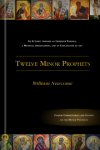
William Newcome’s work examines God’s design in sending the prophets to his people and the poetic nature of the prophet’s work. Critically examining the 12 books of the Minor Prophets, he dissects the metrics and semantics of each prophetic work. His research and study produced a new, improved English translation based on the original texts, along with a critical commentary that examines the language and nuances of the text.
William Newcome (1729–1800) earned his MA in 1753 and his DD in 1765 from Hertford College. In 1795 he was made archbishop of Armagh and primate of Ireland. His works include An English Harmony of the Four Evangelists, Observations on Our Lord's Conduct as a Divine Instructor, and several sermons.
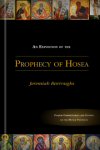
This exposition on Hosea is derived from the sermons, lectures, and notes of Jeremiah Burroughs, a renowned Puritan minister. Burroughs unpacks the Scriptures with a keen exegetical eye, and his sound examination of God’s redemption of Israel through the allegory of Hosea and his wife has a devotional quality that makes it easily accessible. This 700-page volume provides depth and insight into this prophetic work, and will be an excellent addition to any reference collection.
Jeremiah Burroughs (1600–1646) was a well-known Puritan preacher who received his MA from Emmanuel College in Cambridge and served as a member of the Westminster Assembly.
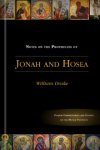
William Drake’s “Notes on the Prophecies of Jonah and Hosea” provides an introduction and overview of both books with study notes. This commentary, designed for Hebrew learners, examines and explicates each chapter, elucidating obscure passages by breaking down the original Hebrew.
William Drake received his MA from Cambridge and was an elected fellow at St. John’s College, where he received his ordination.

A careful scrutiny of the language and structure of the stanzas in Hosea’s composition led Melville Scott to produce a new translation of the text. His work includes a biographical overview of Hosea’s life and work, the problems Scott found through his research, and proposed solutions for those problems. Scott also offers his readers an insightful commentary and an appendix that explains his critical rationale.
Melville Scott (1860–1929) was the vicar of Castlechurch.
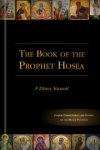
In this translation, F. Tinley Bassett adheres to an exact and literal rendering of the Hebrew. With studied brevity, he relates the origin and history of the prophet and his words, composing a verse-by-verse exposition of the text.
Francis Tilney Bassett (1827–1892) was the vicar of Dulverton, Somerset.

Samuel Horsley delivers a thorough discourse on the book of Hosea, detailing the background of Hosea and his prophecy. He provides an in-depth preface which discusses his methods and approach and the problems of ambiguity present in the text. Fully annotated, this work contains a new translation and indexes of things, authors, and Hebrew words and phrases.
Samuel Horsley (1733–1806) was Bishop of St. Asaph and the Dean of Westminster, as well as a noted biblical scholar and author.
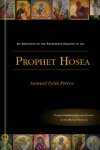
Samuel Eyles Pierce digs into the 14th chapter of Hosea, expounding on his findings through a series of nine sermons. His discourse identifies Christ parallels through the prophecy, the Lord’s address to backsliders and their relationship with God. This straightforward exposition draws out the heart of God for his people.
Samuel Eyles Pierce (1746–1829) was educated at College Trefeca (later merged with Westminster College, Cambridge) before becoming a pastor at a church in Gainsborough. Pierce later gained a reputation as Calvinist.

Taken from the Bible for Home and School series, this commentary presents some of the best biblical scholarship of the late eighteenth and early nineteenth centuries. Designed for the general reader as an inlet to the study of the Word, it offers a running analysis through the text and commentary, with brief explanatory notes, and thorough yet concise introductions to each book.
John Merlin Powis Smith was assistant professor of Semitic languages and literatures at the University of Chicago.
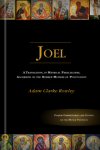
With its vivid and poetic style, the book of Joel distinguishes itself from the rest of the Minor Prophets. Adam Clarke Rowley takes advantage of that with his translation and annotated study, examining the poetical structure of the book and the “sublime language of the Prophet.” His work considers parallelism and verse correspondence of the prophecy, and how the composition of the verses affects the overall message.
Adam Clarke Rowley was the incumbent of St. Matthias in Bristol.

Examining the historical setting of Amos’ message, Ernest Arthur Edgill’s exegetical commentary was written to “interpret the book in a modern light,” making this richly prophetical work accessible to clergy and laity alike. Applying modern criticism and research, his work is a mix of critical principles and Catholic faith.
Ernest Arthur Edghill (1879–1912) was an Anglican priest and theological writer.

W. O. E. Oesterley discusses the use of various manuscripts to obtain a correct reading of the text of Amos. His work, a preparatory grammar by nature, examines the Greek and Latin manuscripts (including Q and 22) and includes a discussion of the commonalities and discrepancies found within.
W. O. E. Oesterley (1866–1950) was educated at Brighton College, Jesus College, and West Theological College. Oesterley went on to become Professor of Hebrew and Old Testament Studies at King's College, London. He is the author of many titles including: The Wisdom of Jesus the Son of Sirach or Ecclesiasticus, The Epistle to Philemon, and The Doctrine of the Last Things: Jewish and Christian.
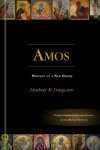
Part of the Life and Service Series, Lindsay B. Longacre’s work is a vital study of the personality and message of the prophet Amos. A subject-based study, it provides a more orderly treatment of the text, offering a historical background on the role of the prophet and the life of Amos. This volume includes group discussion questions for further study.
Lindsay B. Longacre (1870–1952) received his BD from Drew Theological Seminary in 1896 and was the head of the department of Old Testament Literature and Religion at the Iliff School of Theology.

Edward Marbury offers an expansive commentary on the book of Obadiah. His work, a consultation of the “best authors, both ancient and modern,” provides an in-depth exposition on this prophetic book. He establishes key connections between Obadiah and other Scripture, providing a firm foundation for interpretation in light of the book’s cultural and historical context.
Edward Marbury received his BA from Trinity College in Cambridge, and also wrote A Commentary or Exposition upon the Prophecy of Habbakuk.
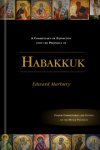
Edward Marbury offers an expansive commentary on the book of Habbakuk. His work, a consultation of the “best authors, both ancient and modern,” provides an in-depth exposition on this prophetic book. He establishes key connections between Obadiah and other Scripture, providing a firm foundation for interpretation in light of the book’s cultural and historical context.
Edward Marbury received his BA from Trinity College in Cambridge, and also wrote A Commentary or Exposition upon the Prophecy of Obadiah.
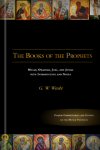
This Christological approach to the books of the prophets discusses chronology, dating, and provides a historical overview and context. Carefully paraphrasing the work, G. W. Wade invites readers into a study of the Minor Prophets by providing a detailed introduction and commentary for each book.
G. W. Wade (1858–1941) was a professor and senior tutor of Latin at St. David's College, Lampeter.
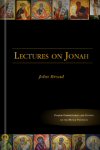
This volume features six sermons from John Broad that dig into the story of Jonah and the commission he didn’t want. Broad picks and chooses from the Jonah narrative, expounding on the lessons to be learned from the more prominent incidents in the story.
John Broad served as a minister at the Tilehouse Street Baptist Church in Hitchin for 16 years.
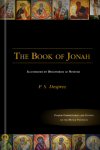
P. S. Desprez presents a powerful series of teachings on the book of Jonah. Discussing the narrative of the runaway prophet in light of Layard’s archeological excavation, Desprex examines the implications and conclusions that can be drawn from these historical finds.
Philip Charles Soulbien Desprez (1812–1879) was an Anglican clergyman.

The Book of Jonah in Four Semitic Versions: Chaldee, Syriac, Aethiopic & Arabic
- Author: W. Wright
- Publisher: Williams and Norgate
- Publication Date: 1857
- Pages: 145
In this study designed to help Hebrew learners explore cognate dialects, W. Wright uses the shortest and simplest of biblical books, the book of Jonah to examine four versions of the text. His work presents full Chaldee, Syriac, Aethiopic, and Arabic texts, and provides a glossary for each.
William Wright (1830–1889) was a famed British Orientalist and Professor of Arabic at the University of Cambridge. His authored and edited works include Apocryphal Acts of the Apostles and Fragments of the Homilies of Cyril of Alexandria on the Gospel of S. Luke.
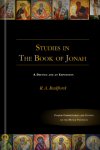
R. A. Redford’s exhaustive examination of the book of Jonah offers historical and practical exposition. This exegetical study takes a holistic approach to the book. Redford focuses less on criticism and more on the general nature of the narrative, defending the work of the prophet against critical attacks and offering his own analysis of Jonah’s character and mission.
Robert Ainslie Redford (1826–1906) was a professor of systematic theology and apologetics at New College in London.
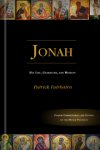
In this examination of the book of Jonah, Patrick Fairbairn seeks to present a fair and just representation of the life and times of the prophet, as well as the nature of his mission. His thorough analysis draws out the depths of Jonah’s behavior in light of cultural circumstances, and examines aspects of the prophet’s call and journey that many find ambiguous.
Patrick Fairbairn (1805–1874) was educated at the University of Edinburgh before becoming a professor of Theology at Free Church Theological College, and, later professor of Church History and Exegesis at the Free Church College in Glasgow.
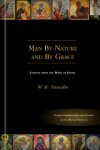
A discussion of Jonah’s character, mission, and waywardness—and eventual return— are at the forefront of this book by W. K. Tweedie. Man by Nature and By Grace unfolds the lessons of wisdom and meaning hidden in Jonah. This thorough exposition and commentary on the text view Jonah through his own words, and examine his response to God’s calling.
W. K. Tweedie was a minister at the Free Tolbooth Church in Edinburgh for fifteen years.
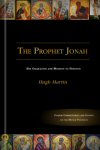
Though he readily admits that he “may have taken Jonah’s part too much,” Hugh Martin gives in-depth consideration to the prophet’s circumstances. Examining the relationship between Jews and Gentiles, he discusses Jonah’s refusal in light of cultural norms, giving a historical overview and cultural context. His work looks at the prophet’s mission and its place in historical development as well.
Hugh Martin (1821–1885) was one of the young men training for the ministry of the Church of Scotland who, in 1843, cast in their lot with the Free Church of Scotland. In 1844 he became the first Free Church minister of Panbride where he remained for 14 years, and where his son, Alexander (the future Principal of New College) was born in 1857. In 1858 Hugh Martin became minister of Greyfriars Free Church, Edinburgh. Owing to ill-health, he retired from the pastorate in 1863, but followed an itinerant ministry, at home and abroad, until within a short time of his death. At a time when the Calvinism of the Reformed Church in Scotland was discarded in favor of rationalistic Modernism, he edited The British and Foreign Evangelical Review, and The Watchword, thereby rendering invaluable service to Reformed evangelicalism. But he was a preacher by predilection, and a controversialist by constraint of circumstances.

This 13-lecture series unravels the prophetic text, detailing the “striking and precious lessons” that can be found in its pages. Providing a historical overview, Raleigh seeks to provide a historically accurate account and faithful exposition of the text, while elucidating the morally instructive lessons to be gathered from Jonah’s tale.
Alexander Raleigh (1817–1880) was a Scottish Presbyterian clergyman and writer.
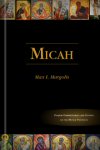
The book of Micah provides the fodder for Max L. Margolis’ verse-by-verse exposition. Margolis dives in to the text, examining Micah’s distant, yet keen, observations in order to better understand the meaning and influence of this Minor Prophet. Fully annotated and with cultural notes, Margolis’s book includes an index to Scriptural references.
Max L. Margolis (1866–1932) was a Lithuanian-born American philologist. He was an instructor, and later, assistant professor of Hebrew language and Biblical exegesis at the Hebrew Union College of Cincinnati.
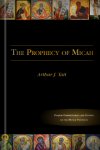
Comparing Micah with his contemporary, Isaiah, Arthur J. Tait looks at the different approaches and influences the prophets had through their callings. In a short course study, he breaks down Micah’s prophecies into eight parts, from “The Word of the Lord” to “The Response of the Child of God,” providing a scholarly yet practical exposition of Bible history and doctrine.
Arthur J. Tait was the principal of Ridley Hall, Cambridge.

A Commentary on the Prophecy of Habakkuk is an interpretation of the prophet Habakkuk’s words with a historiographic bent. Addressing concerns regarding authorship, dating and cultural commentary, James F. Kennedy examines the book verse by verse to reveal the depths of meaning hidden within.
James F. Kennedy (1768–1826) was an Irish clergyman.
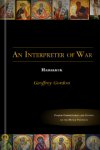
Written from the unique perspective of a country headed toward war, Geoffrey Gordon works his way through Habakkuk, applying the prophet’s words to the state of the nation of England. Based on a series of addresses delivered in 1915 at St. Margaret’s in Westminster, this volume provides an introductory overview of prophecy and its place in the church.
Geoffrey Gordon was the assistant curate of St. Margaret’s.
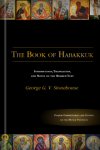
George G. V. Stonehouse’s study on the problems of Habakkuk is a critical analysis based on contemporary criticism. Considering the message of the prophet and the critical problems it raises, he examines the cultural context and life of the prophet. His translation includes grammatical, philological, and textual notes in an effort to imbue the reader with a thorough understanding of this prophetic work.
George G. V. Stonehouse was the vice principal of The Theological College, Edinburgh and a former scholar of Exeter College, Oxford.

This complete study of Zephaniah, one of few in existence, gives this prophetic book the attention it deserves. Its critical commentary and textual analysis discusses the histories of the three different versions—the Vulgate, Peshitta, and Septuagint—plus, questions of interdependence and departures from the Masoretic tradition.
Sidney Zandstra (1863–1961) was a missionary at Ellis Island, and a pastor of the Reformed Church of America.
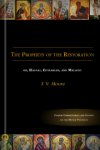
T. V. Moore’s exposition and translation of the restoration prophets examines the metrical forms and parallelism found in each work. He presents a clear, straightforward approach to the text, making his thoughts and observations easily accessible to clergy and laity alike.
T. V. Moore was the pastor of the First Presbyterian Church in Richmond, Virginia.
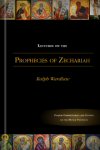
Ralph Wardlaw expounds on the book of Zechariah through a series of 25 lectures which tackle the book systematically subject by subject. Seeking to find a “happy medium” in prophetic interpretation (one that leans neither too far too the literal or supernatural side of things), Wardlaw expounds on this oft-overlooked book, uncovering the hidden gems within.
Ralph Wardlaw (1779–1853) was a Scottish Presbyterian clergyman and writer.
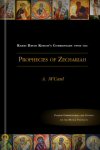
This classic work, a verse-by-verse commentary, has been an essential tool for commentators since the Reformation. Kimchi’s in-depth study delves into Zechariah, producing carefully wrought, thoughtful observations. An intensive, expansive analysis, Kimchi’s work reveals the nuances and subtleties of the text, bringing the wisdom of Zechariah to the forefront. This work includes a biography of Rabbi David Kimchi.
Alex M'Caul received his AM from Trinity College, Dublin.
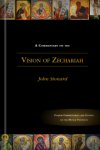
John Stonard provides a commentary on the vision of Zechariah, explicated in a way that is approachable to the average reader. His detailed notes are appended, and offer additional resources and recommendations for study.
John Stonard was rector of the parish in Aldingham Lancashire and also the author of A Dissertation on the Seventy Weeks of Daniel the Prophet.
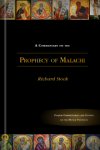
A Commentary upon the Prophecy of Malachi is a detailed exposition on the last book of the Old Testament. Stock provides a summary of the prophecy before digging into the text. His methodical, systematic approach allows readers to easily follow his reasoning and the application of the prophet’s words. A complete and thorough exegesis of the book, Stock’s work draws out the depths of wisdom from Malachi in an accessible and comprehensible manner.
Richard Stock (1569–1626) was an English clergyman and one of the Puritan founders of the Feoffees for Impropriations.
Reviews
20 ratings
joe_bourne1951@hotmail.com
4/2/2019

Kevin Bratcher
6/12/2018
Dave St. Hilaire
7/29/2015

M. David Johnson
3/27/2015

Pastor Reginald D. Cole
10/26/2014
AeliusCicero
6/19/2014

Tyrone K Toler
5/24/2014
Dennis Pulley
4/17/2014
Eduardo Vega
1/4/2014